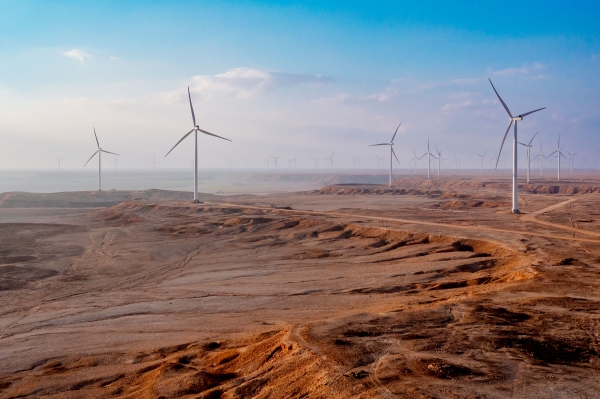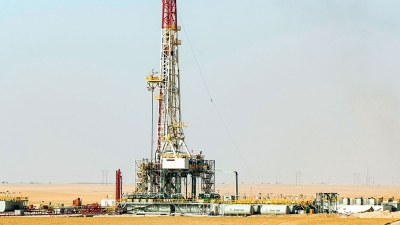

By 2030, the Kingdom of Saudi Arabia aims to produce nine thousand MW of electrical power using wind energy, benefiting from its climate that supports such projects. The King Abdullah City for Atomic and Renewable Energy has monitored the movement and activity of winds in the Kingdom by distributing forty towers, each about one hundred m in height. Specific cities were selected for monitoring, including Riyadh, Sharurah, al-Jawf, Jeddah, Yanbu, Hafr al-Batin, al-Wajh, and Turayf, to be part of the targets of Saudi Vision 2023, which falls within the use of targeted energy sources until 2040.
Wind energy, along with other renewable energies, will contribute to the project of supplying the Kingdom with electrical power from various sources, such as solar, biomass, nuclear, hydrogen, geothermal, and energy converted from waste. The latter is undergoing several laboratory and applied studies by the Center for Sustainable Energy Technologies at King Saud University.
The Kingdom generally boasts extensive maritime coasts capable of producing the equivalent of two hundred GW of wind energy, with an average capacity factor of 35.2 percent. This rate surpasses that of global countries producing electrical power relying on wind, including the United States.
The northwestern provinces of the Kingdom are distinguished by several factors conducive to the highly efficient production of electric currents. Among these factors is the wind speed, which has an annual average exceeding thirty-six km/h, while the average wind speed in the rest of the Kingdom's provinces ranges between fourteen to twenty-five km/h, according to scientific research and studies that have monitored wind movement in the Kingdom.
Dawmat al-Jandal Wind Farm project
It is one of the renewable energy development projects in the Kingdom. It was announced to be operational in 2022 and is equipped with ninety-nine turbines with a total capacity of four hundred MW. The construction phase of the project created about eight hundred jobs, and the operational phase added approximately 150 more jobs. The Dawmat al-Jandal project generates electric power for more than seventy thousand homes.
The Dawmat al-Jandal Wind Farm Project, with a total cost of SAR 1.876 billion, was launched in 2019 as part of the efforts of the National Renewable Energy Program, to be the first and largest project of its kind in the Kingdom.
The project won the 'Deal of the Year for the Renewable Energy Sector in the Middle East and Africa for 2019' after setting a record for the lowest levelized cost of electricity production, which reached USD0.0199 per kWh. The Dawmat al-Jandal Wind Farm Project is a significant step towards achieving the Kingdom's goal of reaching an optimal energy mix, with renewable energy contributing 50 percent of the total energy sources by 2030.
A world record in wind energy generation in the Kingdom
The Kingdom set a world record for the most competitive price in wind energy generation, according to an announcement by the Ministry of Energy, Industry, and Mineral Resources (currently the Ministry of Energy). The price set for the execution of the Dawmat al-Jandal Wind Farm Project marked a global record compared to similar projects.
The Kingdom has achieved a good standing in this field after gaining the trust of investors both within and outside the country, being seen as a vital center and developer of renewable energy and a fertile ground for investment in this sector. This recognition came after the electricity production cost was recorded at 1.99 cents per kWh.
The Dawmat al-Jandal Farm is considered the most competitive and successful project. To develop it, several local and international companies competed, concluding in 2018 with the victory of a consortium comprising 'EDF Renewables' and 'Abu Dhabi Future Energy Company.' This consortium presented a bid that was unmatched by competitors at 2.13 cents per kWh, the lowest price, surpassing projects in the Middle East and North Africa region.
In late July 2019, the project achieved gains of up to 6.5 percent in the cost of electricity production, setting a world record for generating electricity from wind.
Related quizzes

